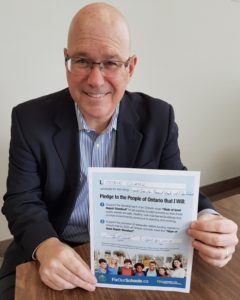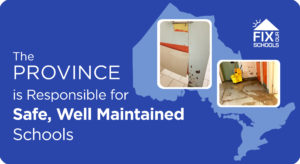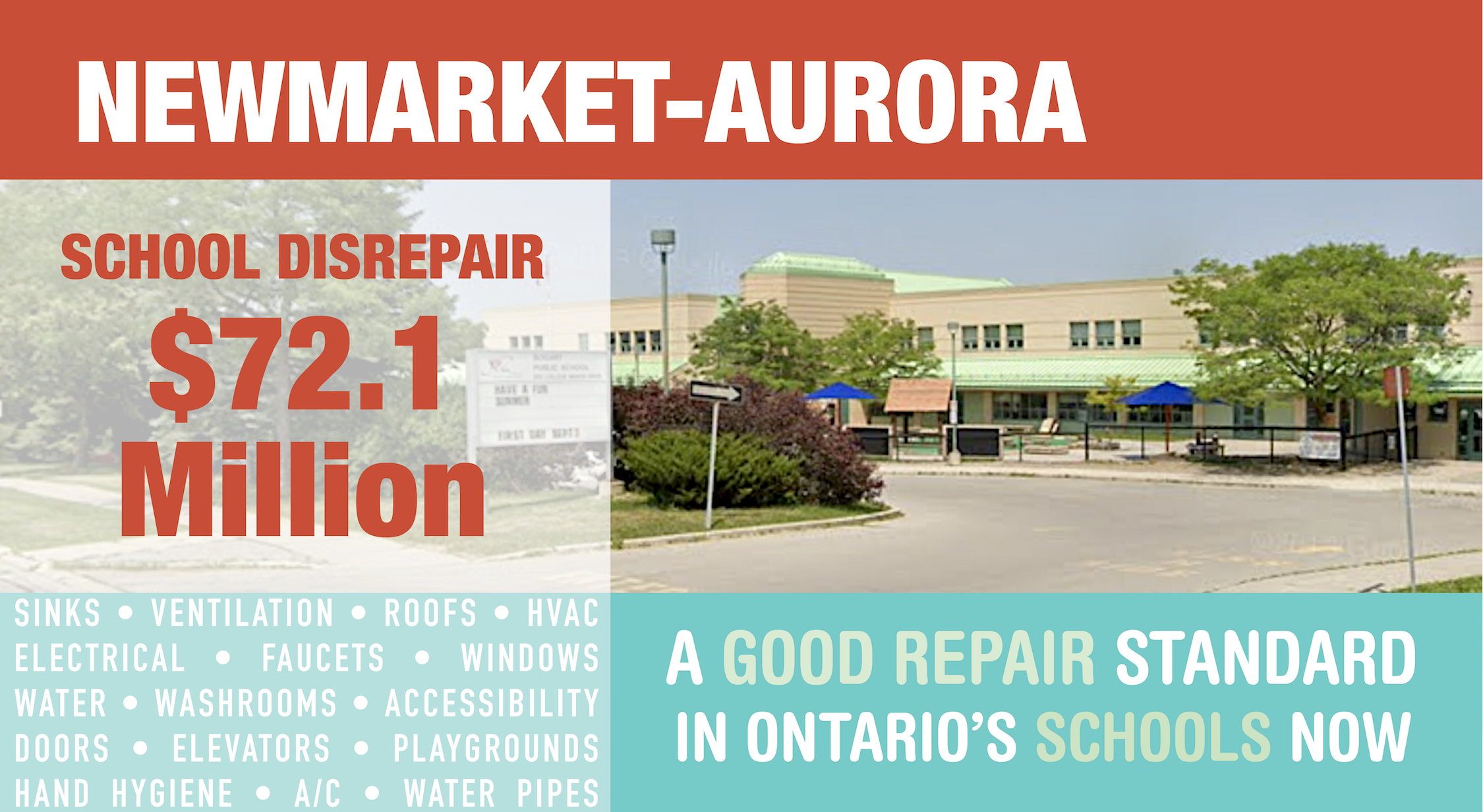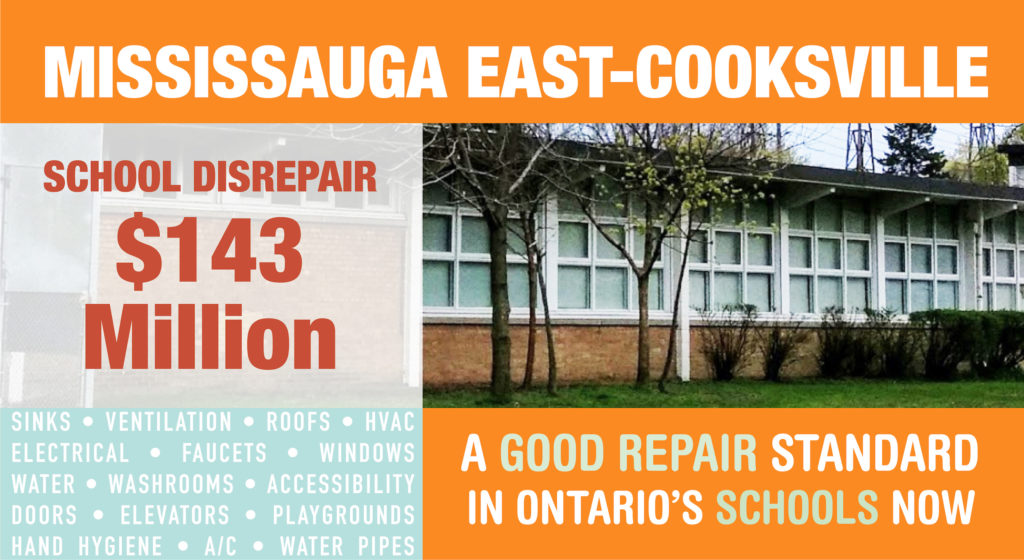Dear MPP Clark
Did you know there is $107-million of disrepair in the publicly funded schools in your riding of Leeds-Grenville-Thousand Islands and Rideau Lake? We commend you for signing the Fix Our Schools Pledge during the election, and making the personal commitment to ensure all Ontario’s schools are safe, healthy, well-maintained buildings that provide environments conducive to learning and working.
We wanted to share the following details of disrepair in each school in your riding in the hope that this detailed information would underscore the importance of developing standards of good repair for Ontario schools and also the importance of providing the adequate, stable provincial funding to school boards required for them to meet those new standards and eliminate the $16.3-billion repair backlog (as of November 2019) that plagues Ontario’s schools:
Total disrepair in each publicly funded school in Leeds-Grenville-Thousand Islands and Rideau Lake:
| J. L. Jordan | $ 476,571 |
| St. Edward | $ 590,767 |
| St. Francis Xavier Brockville | $ 1,260,701 |
| St. John Bosco Brockville | $ 331,015 |
| St. John CHS | $ 4,747,481 |
| St. Joseph Gananoque | $ 276,693 |
| St. Joseph Toledo | $ 120,219 |
| St. Mary CHS | $ 1,448,145 |
| Athens District High School | $ 3,153,473 |
| Brockville Collegiate Institute | $ 5,236,600 |
| Centennial ’67 Public School | $ 1,262,526 |
| Commonwealth Public School | $ 3,987,977 |
| Front of Yonge Public School | $ 451,451 |
| Gananoque Secondary School | $ 10,093,658 |
| Linklater Public School | $ 3,497,574 |
| Lombardy Public School | $ 2,787,549 |
| Lyn Public School | $ 1,695,599 |
| Maynard Public School | $ 4,366,558 |
| Meadowview Public School | $ 61,812 |
| OxfordOnRideau Public School | $ 2,656,199 |
| Pineview Public School | $ 1,140,588 |
| Prince of Wales Public School | $ 4,926,687 |
| Rideau Centennial Elementary School | $ 1,708,323 |
| Rideau District High School | $ 6,606,508 |
| Rideau Vista Public School | $ 1,709,871 |
| South Crosby Public School | $ 2,481,787 |
| South Edwardsburg PS | $ 2,357,611 |
| South Grenville District High School | $ 11,148,722 |
| Sweets Corners Elementary School | $ 2,663,287 |
| The Stewart School | $ 128,842 |
| Thousand Islands Secondary School | $ 12,315,593 |
| Toniata Public School | $ 1,679,841 |
| TR Leger – Prescott | $ 1,980,814 |
| Vanier Public School | $ 3,275,453 |
| Wellington Elementary School | $ 1,210,162 |
| Westminster Public School | $ 3,128,186 |
| ÉÉC AngeGabriel | $ 60,156 |
School conditions matter. They impact student learning, attendance, and health.
We ask that you and your government please prioritize schools as critical infrastructure and take the steps necessary to ensure that the disrepair in all of Ontario’s publicly funded schools is eliminated and that schools are safe, healthy, well-maintained buildings that provide environments conducive to learning and working. We look forward to hearing back from you with details on your plan to Fix Ontario’s Schools.
PLEASE NOTE: Fix Our Schools is relying on the most recent disrepair data provided by the Ministry of Education in Fall 2017 and has mapped postal codes provided by the Ministry for each school to riding postal code information from a third party. Therefore, it is possible that there may be small errors in the data provided here and we would be grateful if community members would contact us with any errors.





